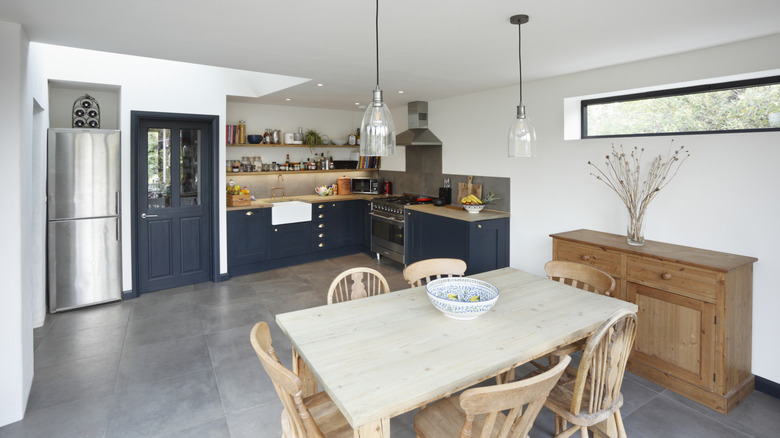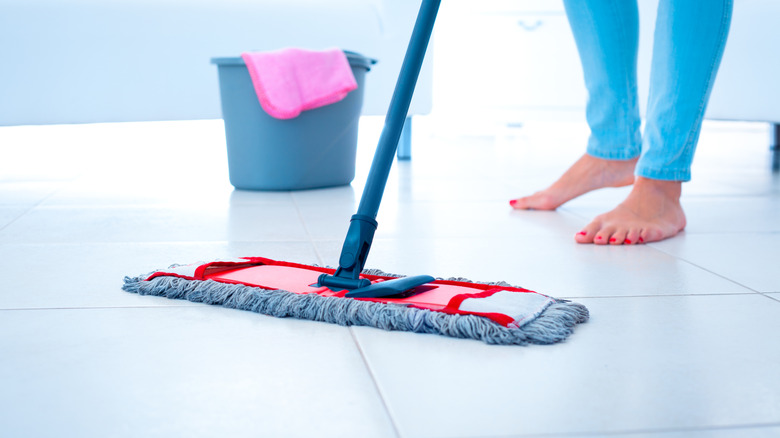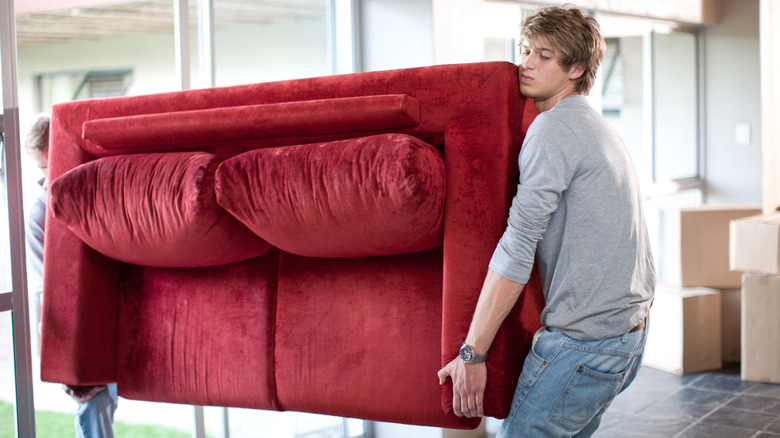Essential Tips To Prevent Scratches On Porcelain Tile Floors
If you have porcelain tile floors, you can breathe a sigh of relief: The tile flooring is hard, durable, and relatively immune to scratching. When comparing porcelain vs. ceramic tile, porcelain offers more scratch resistance than ceramic. Some people refer to porcelain as scratchproof, but that's not completely accurate. Despite being about a seven on the Mohs hardness scale, porcelain can scratch under some circumstances. High-gloss, polished porcelain tiles are more likely to have noticeable scratches than unpolished, textured porcelain tiles. If you don't want to take any chances with your tile floor, take steps to prevent scratches, including protective padding, careful cleaning, and cautious use.
Homeowners often choose tile flooring for high-traffic areas, but the frequent use of those areas could increase the risks of damage and wear. Create a buffer by using door mats, runner rugs, and area rugs in spots where you're most active. In the kitchen, place anti-fatigue mats in spots where you do food prep. Non-skid mats near entrances help catch dirt and rocks that stick to shoes. In your porcelain-tiled family room, choose a large, soft area rug to protect the tile around busy seating areas.
Another way to protect your porcelain tile is to put protective pads on the legs of your furniture. Felt furniture pads come in various sizes and shapes to fit the bottoms of your chair, couch, table, and appliance legs. The pads are usually self-adhesive, so you peel off the backing and press them onto the legs.
Cleaning porcelain tiles to prevent scratches
Knowing the basics for cleaning porcelain tile helps you keep your room looking great while preventing scratches. Dirt, sand, and other debris might not seem like a threat, but they can scratch your flooring, especially if the debris gets slid across the floor. Sweeping or vacuuming is your best cleaning defense against scratches. Keep a small vacuum handy with a floor attachment installed for quick clean-ups whenever you spot dry debris on your floor. Sand and small rocks can be particularly abrasive on flooring, especially if they're ground in by your shoes. Having a no-shoe policy inside the house prevents that from happening and cuts down on how much debris enters your home. Always sweep or vacuum before you mop your floor to keep your mop from dragging hard particles across the tiles.
When it's time to mop, avoid harsh cleaners that could damage or dull the tiles. Warm water with or without a mild, pH-neutral cleaner helps remove grime from your porcelain tiles while keeping them pristine. You want your mop to be damp but not soaking wet as you clean your tiles floors. Use soft cleaning tools, such as microfiber mops or soft fabric cleaning cloths, to prevent scratches. Steel wool, wire brushes, and other abrasive tools could cause little scratches in the tile.
Using porcelain tiled spaces carefully
Porcelain tile can usually stand up to normal residential activities, so you don't have to tiptoe around or be super cautious. But, overly rambunctious or rough activities could damage the surface. If you feel like rearranging your space, never slide the furniture over the tiles. It could scratch the porcelain tile surface and damage the grout. It's safer for your floors to lift and carry the furniture to its new spot.
If you have kids, be careful about the toys and items they use on the tile floor. Items with rough or sharp edges could scratch the floor. While pets' nails shouldn't scratch hard porcelain tiles, it's still a good idea to keep their nails trimmed and well-maintained to avoid the possibility. Nail caps for pets are also an option. Dropping heavy or sharp objects on the floor can also cause scratches. Giving everything a spot to keep it secure can help. For an entryway table storage solution, use as a tray to keep your heavy keys from sliding off the table. In the kitchen, store knives and heavy objects away from the edge of the countertop to reduce the risk of them falling.


